
The Isle of Man Steam Packet Company Limited is the oldest continuously operating passenger shipping company in the world, having been founded in 1830.
The West Cornwall Steam Ship Company was established in 1870 to operate ferry services between Penzance, Cornwall, and the Isles of Scilly. It became the West Cornwall Steamship Company in 1907 and was wound up in 1917.
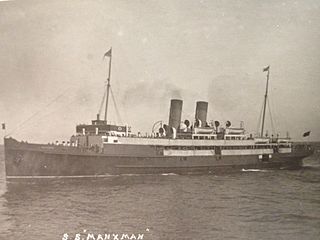
TSS Manxman was a turbine steamship launched in 1904 for the Midland Railway and operated between Heysham and Douglas, Isle of Man. In 1916, she was commissioned by the Royal Navy as HMS Manxman and saw action as a seaplane carrier during the First World War, after which she was acquired by the Isle of Man Steam Packet Company. On the outbreak of the Second World War she was again requisitioned as a troop ship, until she was commissioned and her name changed to HMS Caduceus. She never returned to Manx waters, and was scrapped in August 1949.
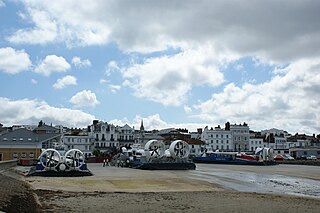
There are currently three different ferry companies that operate vessels carrying passengers and, on certain routes, vehicles across the Solent, the stretch of sea that separates the Isle of Wight from mainland England. These are Wightlink, Red Funnel and Hovertravel.
Manx Line was a ferry operator which operated roll-on/roll-off ferry services between Great Britain and the Isle of Man between 1978 and 1985. An earlier, unrelated, company had used the "Manx Line" name in the late 19th century.

TSS Duke of Clarence was a passenger vessel operated jointly by the London and North Western Railway and the Lancashire and Yorkshire Railway (LYR) from 1892 between Fleetwood and northern Irish ports. In 1906 the LYR bought her outright and transferred her to their summer service from Hull to Zeebrugge, returning to the Irish Sea in winter. During the First World War Duke of Clarence served as an armed boarding steamer. She resumed passenger service in 1920, passing through changes of ownership in the reorganisations of Britain's railway companies in the 1920s, until she was scrapped in 1930.
TSS Colleen Bawn was a twin screw passenger steamship operated by the Lancashire and Yorkshire Railway from 1903 to 1922.

Heysham Port in Heysham, Lancashire, England, ships mainly roll-on/roll-off freight, with one passenger service run by the Isle of Man Steam Packet Company, which operates a twice daily sailing to Isle of Man. There are three freight routes run by Seatruck Ferries and Stena Line which all sail to Ireland daily. Heysham Port railway station links it to Lancaster via Morecambe. Adjacent to the dock site is Heysham nuclear power station.
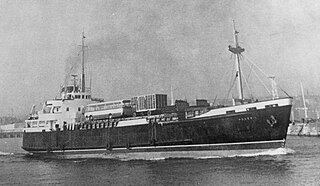
MV Peveril was a coastal cargo vessel operated by the Isle of Man Steam Packet Company. Peveril, the third ship in the company's history to bear the name, was built by Ailsa Shipbuilding Company at Troon, Scotland, in 1964.
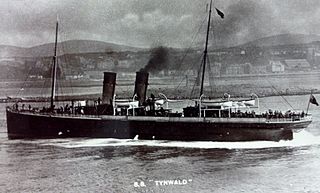
SS (RMS) Tynwald (III), No. 95755, was an iron passenger steamer which served with the Isle of Man Steam Packet Company, and was the third vessel in the Company to bear the name.
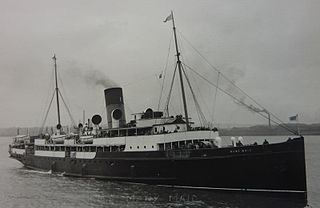
TSS (RMS) Manx Maid (I) No. 131765 - the first ship in the Company's history to be so named - was a packet steamer which was bought by the Isle of Man Steam Packet Company from the London and Southwestern Railway Company, and commenced service with the Steam Packet in 1923.

SS (RMS) Victoria was a packet steamer originally owned and operated by the South Eastern and Chatham Railway Company, who sold her to the Isle of Man Steam Packet Company in 1928 for the sum of £25,000.

SS (RMS) Mona (II) No. 76302 was a packet steamer operated by the Isle of Man Steam Packet Company. Mona was the first screw-driven ship in the company's history.

MV Conister (II) No. 187114 was a cargo vessel operated by the Isle of Man Steam Packet Company, the second vessel in the Company's history to bear the name.

SS (RMS) Mona (III), the third ship of the Company to bear the name, was a steel paddle-steamer which was originally owned and operated by the London, Chatham and Dover Railway Company, who then sold her to the Liverpool and Douglas Steamship Company, from whose liquidators she was acquired by the Isle of Man Steam Packet Company in 1903.

The passenger steamer SS Peel Castle was operated by the Isle of Man Steam Packet Company from her purchase in 1912 until she was sold for breaking in 1939.
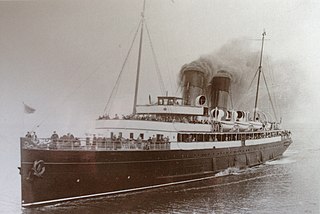
SS Snaefell (IV), the fourth ship in the company's history to be so named, was a packet steamer originally owned and operated by G. and J. Burns, who sold her to the Isle of Man Steam Packet Company in 1920.
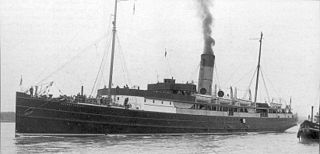
The packet steamer SS Rushen Castle was operated by the Isle of Man Steam Packet Company from its purchase in 1928 until it was sold for breaking in 1947.

SS or RMS The Ramsey was a passenger steamer operated by the Isle of Man Steam Packet Company from 1912 to 1914. She had been built in 1895 as Duke of Lancaster for the joint service to Belfast of the London and North Western Railway and Lancashire and Yorkshire Railway companies. The steamer was requisitioned by the Admiralty in 1914 as the armed boarding vessel HMS Ramsey and sunk the following year.
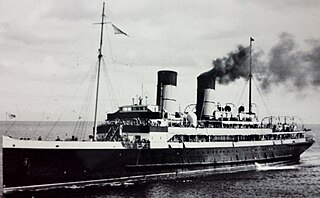
SS (RMS) Viking was a steel, triple-screw turbine-driven passenger steamer operated by the Isle of Man Steam Packet Company between 1905 and 1954.




















